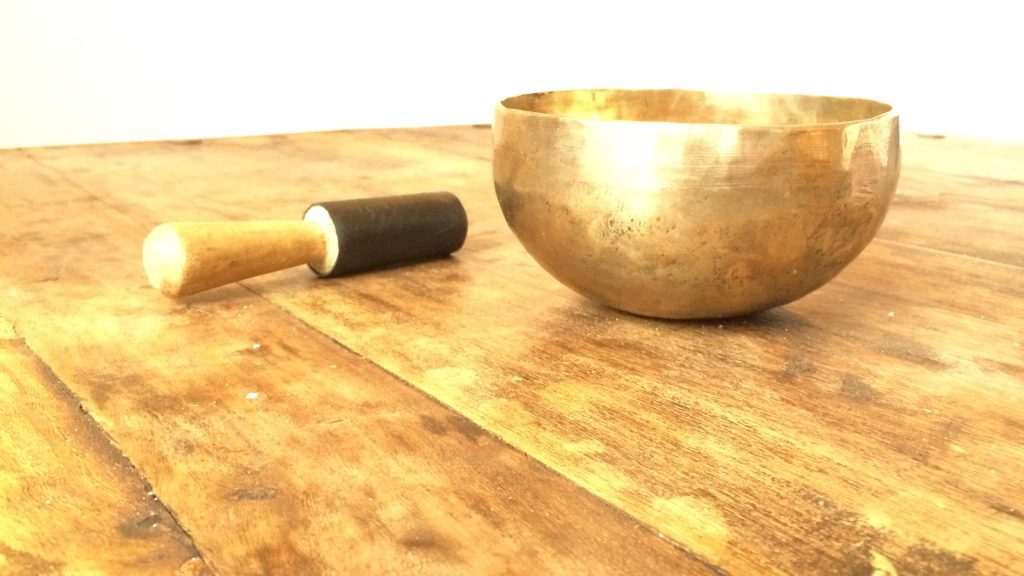Mindfulness is often mistaken for “being in the moment”. It’s easy to understand how this confusion might arise, so let’s compare the two to see where they overlap, and where they may differ.
In the popular vernacular, “being in the moment” straddles the divide between normal human behaviour and mysticism. Most people have had experiences – usually when engaging in some pleasant activity – where the narrating, commenting voice in their head drops away to leave only the pleasant experience of “just doing”. Mystics, like Eckhart Tolle, present the possibility of inhabiting this present-moment experience as the default mode of living. Many people assume that mindfulness is a semi-mystical practice that aims to get you to that pleasant state. As we will see, this expectation is inaccurate.
Being in the moment
“Being in the moment” denotes a pleasant state where one experiences the relative absence of unhelpful or unpleasant thoughts and judgements. Without the usual stream of running commentary that accompanies your life, experience becomes pleasant, effortless and clear. The experience of being in the moment harbours an element of timelessness, of just this very moment existing, sometimes with exquisite salience.
What is actually experienced in such moments is flow, first scientifically described by Hungarian author Mihály Csíkszentmihályi. It does not really matter how flow is brought about, whether through playing a game, engaging in one’s profession or by doing some pleasant activity, the most important factors for flow to arise are:
- An even match between skill level and challenge
- An immediate connection between action and result
- High intrinsic motivation to engage in the flow-producing activity
- Absence of disturbing factors
Mindfulness
Mindfulness, on the other hand, is concerned not with obtaining a state that feels good, but with observing anything that presents itself to your mind, whether they are bodily sensations, sense data or mental impressions. While, like flow, mindfulness can only be practiced within the current moment, the goal of the practice is explicitly not to stop your thoughts from happening but in fact to welcome them and to observe them as closely as possible.
And whereas flow is brought about by doing and getting absorbed into some activity, mindfulness is developed by the deliberate act of paying attention in any moment one chooses to practice mindfulness. In tandem with mindfulness, you develop discernment of the elements that make up your current-moment experience.
In practice, the contrast between flow and mindfulness practice could hardly be more stark. Whereas flow – being in the moment – assumes the wilful suspension of thinking to produce a state of pleasant absorption, mindfulness sacrifices the pleasantness of one’s experience to discern ever more closely its component parts. In fact, mindfulness teachers tell you to merely observe the affective labels (pleasant, neutral and unpleasant) that your mind applies to all of your experience, without getting caught up in believing them. This way, discernment is sharpened and mindfulness developed.
Disadvantages of mindfulness
So, am I saying that mindfulness is not a pleasant experience? You bet, that is exactly what I’m saying. I won’t sugar-coat it. For most people, and for a number of reasons, practicing mindfulness is one of the hardest things they can do.
First off, you haven’t practiced mindfulness ever in your life. It’s a new adventure. So when you are starting to develop mindfulness now, with your mind already set in its ways, you are initially embarking on an uphill battle. This is because you’ve most likely been practicing the opposite of mindfulness for a long time, so it takes time to rewire your mental circuits to properly learn this practice.
Second, with much of our lives devoted to “doing”, making the switch to simply “being” is a huge leap. And it’s a leap that has to be taken over and over again, every time you have promised yourself to make time to meditate.
Third, there can be something off-putting to having to just observe pleasant sensations, thoughts and sense impressions without following the pleasantness. The attitude you’re being asked to cultivate is that of equanimity – non-preference towards the entirety of your experience, warts and all. Especially to newbies, this can feel restrictive and might present a genuine obstacle. I suppose this is why most current-day mindfulness teachers keep stumm about this element of the practice. With time, however, this exact element can come to feel liberating, because pleasant experiences can imprison your mind just as effectively as can unpleasant ones. The freedom that is obtained this way can have a powerful effect on your life. Sadly, many people never get the chance to find this out.
Conclusion: the advantages of mindfulness
So, “being in the moment” and mindfulness are both practiced in the current moment, but they differ in the sense that flow is by definition a pleasant experience while mindfulness aims to be a neutral enabler of adequate discernment of the factors that make up a person’s experience. Why then practice mindfulness?
Apart from the scientific evidence that practicing mindfulness acts as an effective antidote to stress, depression and anxiety, mindfulness practice is increasingly used as a way to gain insights into a person’s most intimate ways of relating to oneself: one’s personal narratives. Knowing in great detail the stories you tell yourself frees you from many self-made impediments to your long-term goals.
Perhaps the biggest difference when comparing merely “being in the moment”, pleasant as that may be, to practicing mindfulness is this dimension of learning to be free within the space of your own head. The experience of flow can only provide you with momentary relief from unhelpful mental commentary, whereas practicing mindfulness can help you accept, learn from and eventually overcome unhelpful aspects of your inner life.
